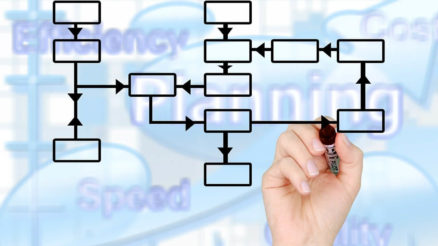Organizational restructuring can be a risky endeavor.
It’s understandable why many managers and professionals would want to restructure their organizations – it offers the chance for a fresh start, allows new processes and systems to be implemented, helps to streamline operations and create cost savings.
But with these potential benefits come serious risks: overwhelm of key employees, changes in morale or productivity, increased complexity of process implementation, resistance from stakeholders—these are just some of the issues that can arise when an organization undergoes restructuring.
To ensure organizational success post-restructuring requires careful planning, diligent execution and constant monitoring.
In this blog we will take a closer look at the risks associated with organizational restructuring so you know what to watch out for as you make decisions about your own company’s transformation plans.
Organizational Restructuring – Definition
Organizational restructuring is the process of re-designing an organization’s structure and processes in order to better meet its objectives. The purpose of restructuring may vary, ranging from reducing overhead costs, improving operational efficiency or agility, developing new capabilities, or addressing changes in the external environment.
It typically involves changes to the organizational structure, such as job titles or roles, departments or divisions, reporting structures, and workflows.
Types of Organizational Restructuring
Organizational restructuring can take many forms, but some of the most common types include:
1. Downsizing
This type of restructuring involves reducing the size of an organization’s workforce in order to meet cost-cutting or efficiency goals. It can involve the elimination of certain job roles or departments, or a reduction in the workforce. The benefits of downsizing include: reduction in operating costs, improved efficiency and agility and increased competitiveness.
2. Merger and Acquisition
Mergers and acquisitions (M&A) are a common form of organizational restructuring that involves the combination or absorption of one company by another. In a merger, two companies join forces to create a single new entity, while an acquisition occurs when one company buys out the other completely. The benefits of merger and acquisition include: increased market share, access to new markets or technology and economies of scale.
3. Legal Restructuring
Organizational restructuring can also involve legal changes to the structure of the company, such as changing the status of a company from one type of business entity to another, or transforming an unincorporated business into a corporation. This type of restructuring is often undertaken in order to gain certain tax or financial benefits.
4. Cost Restructuring
Cost restructuring is a type of organizational restructuring that specifically focuses on cutting operational costs. It typically involves streamlining processes, reducing labor costs and eliminating redundancies. This type of restructuring can be achieved through automation, outsourcing or reorganizing departments and roles. It may also involve changing the compensation model to increase efficiency and provide cost savings.
5. Turnaround Restructuring
Turnaround restructuring is a type of organizational restructuring aimed at improving the performance of a company that is facing financial difficulties. This type of restructuring typically involves replacing business model, products, services, and culture.
6. Repositioning Restructuring
Repositioning restructuring is a type of organizational restructuring that involves changing the business focus, strategy and positioning in order to create a competitive advantage. It may involve revamping the company’s product line or services, entering into new markets or expanding existing ones, or developing and implementing a new marketing campaign.
7. Spinoff Restructuring
Spinoff restructuring is a type of organizational restructuring that involves the creation of a new company or division from an existing parent company. This type of restructuring is designed to create additional value for shareholders by allowing the company to focus on specific business strategies and activities. It also helps to isolate risks associated with certain businesses, such as volatile markets.
8. Divestment
Divestment restructuring is a type of organizational restructuring that involves divesting (selling or spinning off) part of the organization, such as subsidiaries or divisions, in order to focus on core activities and reduce risks. This type of restructuring can involve selling off subsidiaries, divisions, assets or investments to another company or organization, spinning off parts of the
Risks of Organizational Restructuring
Here are some common risks associated with organizational restructuring:
Negative impact on investment
The biggest risk of organizational restructuring is the potential for negative impacts on investment. Restructuring can result in reduced profits and decreased shareholder value, which can have a long-term impact on investor confidence and share prices. Additionally, restructuring can require considerable short-term financial investments that may not be recovered in the long run.
Non-alignment with business goals
Non-alignment with business goals is major risk of organizational restructuring. Restructuring can have a significant impact on the alignment between the company’s objectives, strategy and operations. If the restructuring process fails to consider the company’s long-term vision or take into account how it fits into competitive markets and customer needs, then it can lead to potentially devastating outcomes.
Confusion over new roles and responsibilities
Confusion over new roles and responsibilities is another common risk associated with organizational restructuring. This risk can occur when restructured organizations fail to clearly communicate the changes to employees, which causes confusion and uncertainty about their roles and responsibilities in the new structure. Additionally, if there are significant changes in job titles or reporting structures, it can lead to misunderstanding of organizational restructuring.
Demotivation
Demotivation is a risk associated with organizational restructuring as it can lead to a decrease in employee morale, engagement and productivity. This is due to the uncertainty and confusion that comes with transitioning to a new structure, as well as potential changes in job roles and responsibilities. Additionally, employees may lose the sense of job security that they once had, leading to further demotivation as they worry about their future.
Resistance from team members and stakeholders
Resistance from team members and stakeholders is a major risk associated with organizational restructuring. This type of resistance can stem from a variety of sources, such as fear of job security, uncertainty regarding new roles and responsibilities, or a lack of trust in the new organizational structure.
Team members may resist organizational restructuring changes due to a variety of factors. Psychological resistance is one of the most common reasons for resistance, as employees may be reluctant to let go of existing roles and responsibilities or accept new ones. They may also be uncertain about how the restructuring will affect their job security or terms of employment.
Additionally, employees who have been part of the organization for a long time may struggle to adapt to the new structure. This can lead to resistance and risks of unrest as those affected by the restructuring may view it as a direct threat to their job security and livelihood.
Investor/Shareholders Reaction
Many times, investors and shareholders show a negative reaction to organizational restructuring due to various risks associated with the process. Restructuring can impact the company’s financial performance in the short-term, which can lead to reduced profits and decreased shareholder value.
Additionally, investors may be concerned about the long-term impacts of organizational restructuring. Companies that have undergone restructuring often suffer from decreased productivity and profitability, as well as risks associated with changing roles, responsibilities, and reporting structures. Additionally, investors may be worried about how the restructuring will affect the company’s competitive position in the market.
Loss of human resource asset
Loss of human resource asset is one of the risks associated with organizational restructuring. The process of restructuring can lead to significant changes in job roles, responsibilities and reporting structures, which can cause employees to become disoriented and confused. As a result many skilful and committed team members or employees have no option left but to leave the organization.
Public Image
Organizational restructuring can lead to risks of damaging public image, as it can be seen by outsiders as a sign of instability or distress. This is especially true if the restructuring involves significant changes in job roles and responsibilities, as this can lead to confusion and uncertainty among employees, customers, and other stakeholders.
Additionally, any negative publicity related to the organizational restructuring risks can have long-term impacts on the company’s reputation. This can lead to decreased customer trust and loyalty, lower profits and revenue, as well as a decrease in employee morale and productivity. Furthermore, public perception of the organization may be adversely affected by the risks associated with restructuring
Final words
Restructuring can bring about several risks that may lead to the failure of the organisation. These include negative effect on investment, non-alignment with business goals, loss of key personnel, and resistance from employees. It is essential for organisations to be aware of these risks before embarking on a restructuring process. By understanding the risks involved, organisations can take steps to minimise them and increase the chances of a successful outcome.



